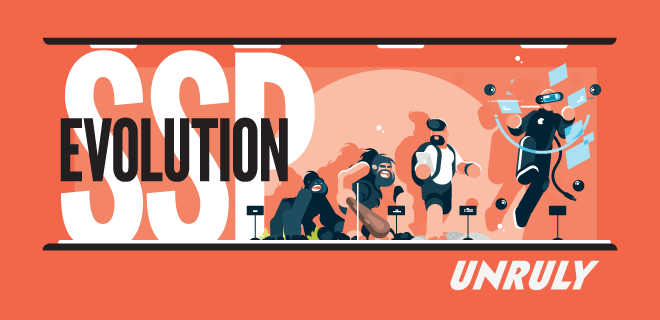
A flurry of acronyms floats around the ad tech space at any given moment. But, in recent times, none are being talked about more often than CTV and OTT.
It’s nearly impossible to keep up with the growth rate — from newly launched streaming services to record-breaking pandemic-driven viewership to mounting ad spend. But with great expansion also comes myriad questions, expectations, and issues.
How do we solve for fragmentation? How will we accurately target audiences and measure advertising? Will there be more inventory options? The list goes on and on. As the ecosystem evolves, so does the SSP. Ad tech players positioning themselves for the win, are partnering up and consolidating, providing buyer and seller alike less friction and fewer intermediaries. Let the M&A games begin.
We spoke with Ken Suh, Chief Strategy Officer, Unruly to learn more about the future of CTV/OTT, the power of Automatic Content Recognition (ACR) beyond walled gardens, and of course — as we near the end of the third-party cookie — user privacy.
Raquel Hudson: What should publishers and advertisers expect from ad tech partners as the CTV/OTT space continues to grow?
Ken Suh: It’s no secret that the demand for CTV and OTT on both the consumer and advertiser sides is growing at an incredibly fast pace. This means ad tech partners need to innovate and evolve in a way that ensures they’re not just bridging the gap between linear and digital TV buying, but also providing unique enhancements to the measurement, data, and delivery of that supply.
If you look at what we’re doing at Unruly, you’ll see how quickly we’ve evolved as a company – expanding beyond an SSP to become truly a full end-to-end solution that’s inclusive of unique demand from Tremor Video DSP, an ad management platform built specifically for TV, a proprietary DMP, and a dynamic creative studio, Tr.ly.
The more holistic and advanced the offerings that ad tech partners can provide, the more efficient the results will be in terms of both ad performance and inventory monetization — all members of the ecosystem need to keep this in mind in the coming year.
RH: You mentioned data enhancement, which today also includes Automatic Content Recognition (ACR) data that is kept behind walled gardens. Why is it so important to have access to ACR data beyond the walled gardens?
KS: Because ACR data recognizes content that appears on a smart TV – whether that’s through a streaming app or broadcast – it’s a powerful tool in tying together linear and CTV/OTT advertising, but it has limitations when kept within the walled gardens.
When buyers are forced to go directly to the sources individually to activate that data, they’re faced with inefficiencies in the buying process, in solving for audience duplication, and in connecting the dots between their digital and linear measurement.
But accessing ACR data holistically outside of the walled gardens on the open web means that it can be deduped at scale, enriched through other sources like set-top-boxes, and give buyers comprehensive measurement of their linear and CTV/OTT plans. Only then can they really unlock the full potential of ACR data.
RH: Ad-supported streaming viewership has seen exponential growth in the past two years. What are some trends that you’re seeing outside of the US in the expansion and adoption of ad-supported CTV/OTT?
KS: We’ve certainly seen a boost in adoption, especially in Europe. The IAB reported that 60% of TV viewers in the UK and Italy watch CTV at least once a month. But a key theme we’ve all seen come up time and time again is the increasing concern around user privacy with digital – and CTV/OTT of course falls into that bucket.
We’ve obviously been talking about GDPR and cookie deprecation for a few years now, but consumers are still keen to understand (and control) who’s using their data, and in what ways. They want a personalized advertising experience but want to ensure they control who is accessing their data. That’s why I’d say solutions like opted-in ACR data from smart TVs and those that utilize publisher-direct data, like content-level targeting, are going to boom and thrive in the future.
RH: What is your prediction for CTV/OTT in the next 5 years?
KS: I think the increased demand for inventory here is going to make the landscape even more of a seller’s market, and subsequently, I expect we’ll see further consolidation in the ad tech space.
Both publishers and buyers will likely reduce their list of ad tech partners down to their most trusted partners, and – as I said earlier – those partners will have to innovate and evolve at lightning speed to bring true value to publishers and advertisers.
That’s why we’ve made big moves like acquiring Spearad, an advanced ad management platform, to not just enable publishers to take better control of their inventory, but also reap both the efficiency and monetization benefits from working with a single trusted partner.
Ultimately, I believe the companies that can forge a strong connection between the buy- and sell-sides are the ones that stand to win here. They can provide the most effective, efficient path forward for both parties to transact.